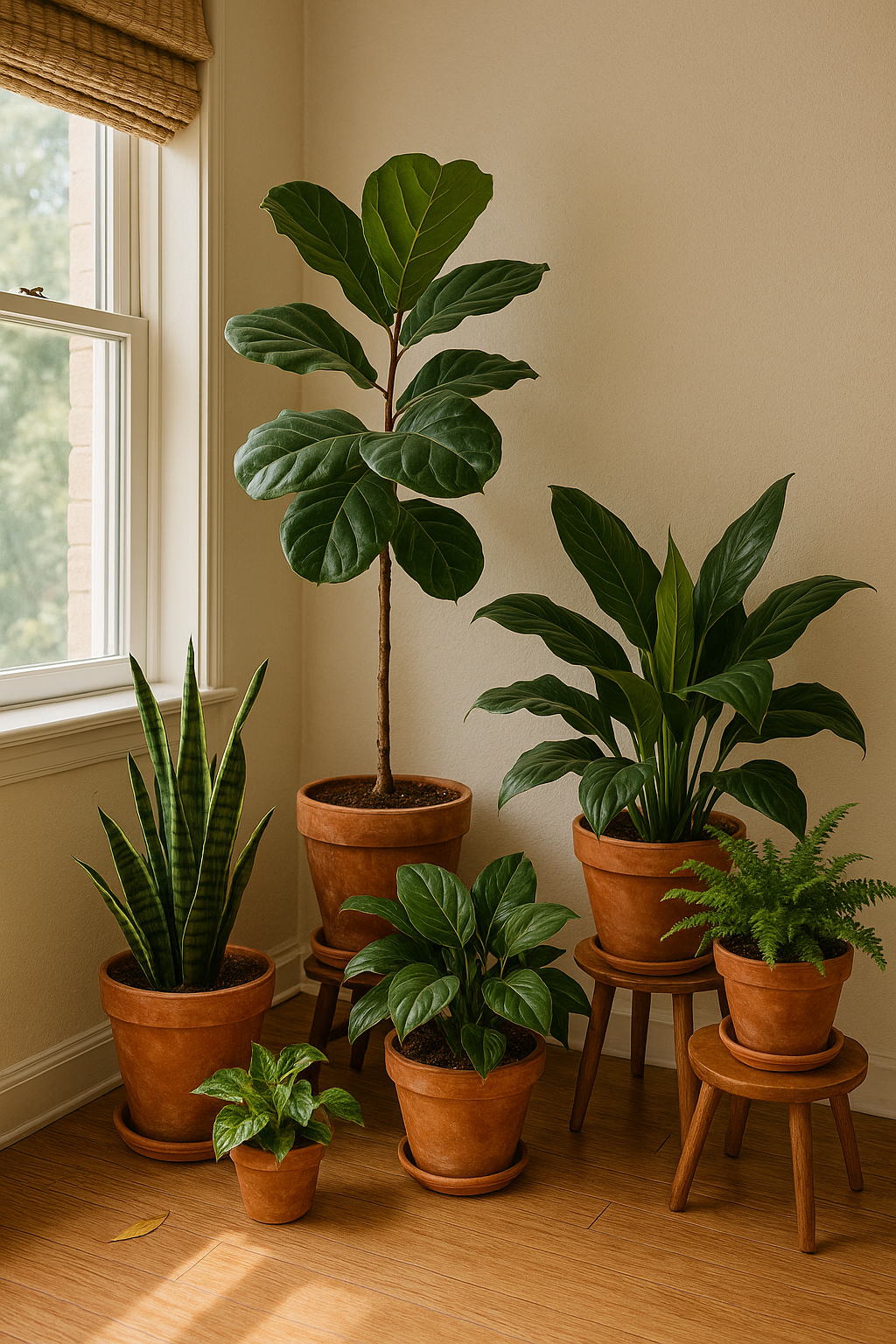Taking care of indoor plants may seem simple—just water them occasionally and give them some sunlight, right? But many apartment dwellers unintentionally make mistakes that can harm or even kill their plants. Caring for plants in small spaces requires attention to details like lighting, ventilation, humidity, and proper containers. In this comprehensive guide, we’ll explore the most common mistakes when caring for apartment plants and how to avoid them so your indoor garden can thrive.
1. Choosing the Wrong Plant for the Environment
One of the most frequent mistakes is choosing a plant based only on its looks, without considering the environment where it will live. Every plant has specific needs for light, humidity, and temperature. For example, a fern loves humidity and indirect light, while a cactus prefers direct sun and dry air.
How to avoid it:
- Observe the light orientation of your windows: north and east tend to have lower light, while south and west get stronger sunlight.
- Do a little research before buying. Consider how much light and air circulation the space gets.
- Start with easy-care plants like pothos, snake plant, and ZZ plant.
2. Overwatering or Underwatering
Both overwatering and underwatering can be harmful. Many people water plants on a fixed schedule without checking whether the plant actually needs water. This can lead to root rot, fungus, or dehydration.
How to avoid it:
- Use the finger test: stick your finger about an inch into the soil. If it feels dry, it’s time to water.
- Always use pots with drainage holes and a saucer underneath to catch excess water.
- Adjust watering frequency based on the season. Water more in summer, and less in winter.
3. Poor Drainage
Using containers without drainage or the wrong type of soil can cause water to accumulate at the bottom, which leads to root rot.
How to avoid it:
- Always choose pots with drainage holes.
- Add a drainage layer at the bottom using pebbles, perlite, or expanded clay.
- Use a potting mix suitable for the type of plant you’re growing.
4. Not Adjusting Care to the Seasons
Plants are sensitive to seasonal changes. During autumn and winter, there’s less light, lower humidity, and slower plant growth.
How to avoid it:
- Reduce watering during winter months.
- Move plants closer to windows when daylight is limited.
- Avoid exposing plants to cold drafts or heat sources like radiators and space heaters.
5. Using the Wrong Soil
A lot of beginners use the same soil for every plant, not realizing that each type requires different levels of drainage, nutrition, and moisture retention.
How to avoid it:
- Use specialized potting mixes: succulents and cacti need well-draining soil, while ferns need more organic-rich, moisture-retentive mix.
- Consider adding compost or organic material to improve soil structure.
6. Forgetting to Fertilize
Most houseplants are in small containers with limited nutrients, which get used up over time.
How to avoid it:
- Fertilize with organic or synthetic options every 4–8 weeks during spring and summer.
- Avoid fertilizing in winter, when plant growth slows down.
- Always follow package instructions to prevent fertilizer burn.
7. Placing Plants in Drafty or Inconsistent Temperature Zones
That stylish spot near the window or AC unit might look great, but your plant might hate it. Drafts and temperature fluctuations can cause stress.
How to avoid it:
- Keep plants away from vents, radiators, air conditioners, and open windows.
- Find a stable environment with consistent temperature and humidity.
8. Not Cleaning the Leaves
Dust builds up on leaves and blocks sunlight, hindering photosynthesis and gas exchange.
How to avoid it:
- Wipe leaves gently with a damp cloth once a month.
- For smaller or delicate leaves, use a soft brush or mist with water.
9. Frequently Moving Plants
Plants take time to adapt to their surroundings. Moving them too often can stress them out and disrupt growth.
How to avoid it:
- Only relocate plants when necessary.
- When you do move them, do it gradually—especially if the lighting conditions change drastically.
10. Over-Caring
Ironically, one of the most damaging things new plant owners do is over-care. Excess watering, frequent soil disturbance, or constant repotting can stress your plant.
How to avoid it:
- Let the plant “speak” before taking action. Observe signs like drooping, yellowing, or crispy leaves.
- Stick to a simple weekly care routine: check soil, clean leaves, and look for pests.
Bonus: If You Have Pets
Some common houseplants are toxic to pets. Curious cats or dogs might chew on leaves or dig in the soil.
How to avoid it:
- Research pet-safe plant lists (the ASPCA website is a great resource).
- Safe options include spider plant, calathea, and parlor palm.
- Keep potentially toxic plants on high shelves or in hanging baskets.
Final Thoughts: Learn and Let Grow
Taking care of apartment plants is a learning journey. Each plant teaches you something about light, water, patience, and observation. Avoiding these common mistakes helps create an environment where your plants not only survive—but truly thrive. With a bit of care and consistency, your apartment can become a lush and refreshing indoor oasis.
